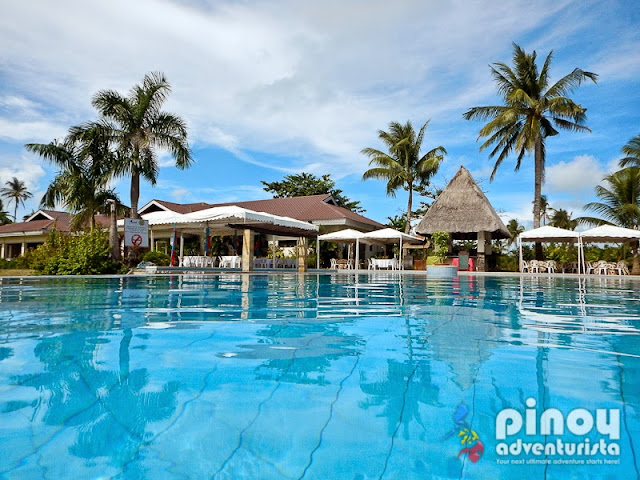Experience the fun and beauty of Capiz. Discover the culture and tradition of Capizeños. Join the exciting adventures and great festivals. Be amaze with enchanting wide powdery gray-sand beaches of Baybay and Olotayan Island. Be fascinated with the beautiful sunset.
Welcome to a rich culture province called Capiz!
Capiz is known as the "Seafood Capital of the Philippines" for it is one of the richest fishing grounds and a major contributor in the aquamarine industry of the Philippines. Capiz was among the top 15 most frequently visited places in the Philippines. Be amaze for I will bring you to the different kasadyahan sa Capiz. Capiz is known for the Placuna placenta oyster shell that has the same name locally and is used for decoration and making lampshades, trays, window and doors.
Sinadya sa Halaran is the highlight of the kasadyahan sa Capiz, a merging of the Roxas City Fiesta "Sinadya" and the Province celebration of "Halaran". "Sinadya sa Halaran" is a commemoration of the feast of the patroness of Roxas City which is the Immaculate Concepcion and a thanksgiving. It literally means "Joy in Sharing and Thanksgiving" . Rituals and festivities of every municipalities where captivated in this occasion. Fireworks, grand parade, fluvial processions, fair and food festival, street dancing, and exhibits are some of the things to see of this event.
The biggest bell in Asia and the 3rd in the World.
According to Philippine history, Don Juan Reina was commissioned by Friar Beloso to cast the largest bell in the Philippines and Asia and the third biggest bell in the world in 1878. The town people call “Dako nga Lingganay” (meaning, “big bell”), was made from 70 sacks of gold and silver coins donated by the townsfolk.

2nd Spanish Settlement...
The bell can be found in Sta. Monica Church in Panay, one of the oldest towns in the Philippines about 20 minutes away from the Capital City Roxas' Plaza. It is founded by Spanish Augustinian Friars in 1581. The structure is made of coral stones and measured 70 m long, 25 m wide and 18 m high. The floor is covered with marble. It's interior is baroque
Capiz is province is rich with beautiful beaches to visit and enjoy.
Another kasadyahan sa Capiz is the Baybay Beach is 5-10 minutes ride from Roxas City airport. It is a popular weekend spots for local and foreign tourists from nearby towns and provinces. Even me and my mom like to hang out there with her amigas. The beach is seven-kilometer long stretch of sugar-fine glittery and black sand with relatively calm waters, ideal for swimming, snorkeling, kayaking and skimboarding. It is facing the Sibuyan Sea. The place is a good seafood tripping to visit and dine. The People's Park is located at Baybay Roxas where me and my family usually dine and especially you can see the beautiful view of Mantalinga Island here. Delicious and yummy seafood dishes is served here like Diwal, Oyster, Hipon and my favorite inihaw na pusit. I say you should try it. Manamit guid!(Masarap talaga!)
Grilled Squid
Sinigang na hipon
Diwal or Angel Wings
Actually there is a so-called the Diwal Harvest Seafood Festival is held every 2nd weekend of July. The Diwal is a rare bivalve found abundantly along the coastal waters of Roxas City and Capiz.
Oyster
Olotayan a romantic island destination...
Referred to as the “Mini-Boracay” in the City of Roxas, Olotayan Island is approximately an hour boat ride from Banica wharf at Roxas City, this barangay is blessed with serene shores with white sand mixing with corals washed ashore by strong waves, Olotayan beach offers a tranquil and relaxing “out of the city hassles” atmosphere. With clear waters and a rural setting, where sea waves and occasional laughter’s from kids playing at a distance, the place is fit for honeymooners or businessmen who wants to have “a get away” from it all.
Olotayan, the only island barangay of Roxas City with estimated land area of 100 hectares, actually got its name from native word “olo” (head) and “Tyan” (stomach). A popular legend that have survived the passing of decades said that in the olden days a wicked giant lived in the land and has always brought havoc and sufferings to the inhabitants who turned to the “anitos” or “anitas” (gods or goddess) who dwells in the land for help. Their pleas were heard and a strong lightning hit the wicked giant which scattered his body to the sea. The islands of Roxas City where then named after the body parts of the giant. Thus, his head and stomach (Ulo and Tiyan) became the island of Olotayan. Other islands like “Mantalinga” came from the Mata (eyes) and Talinga (ears), Tuwad (Buttocks) and Sepatos (feet).
Source: http://capiznon.org/2008/12/02/olotayan-island/
Source: http://capiznon.org/2008/12/02/olotayan-island/













































